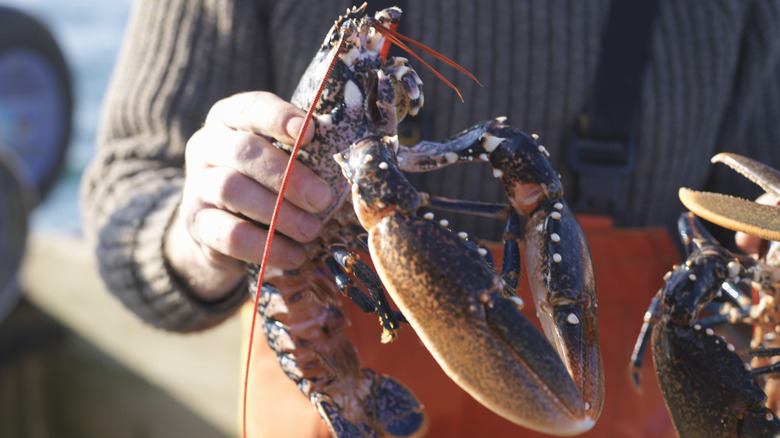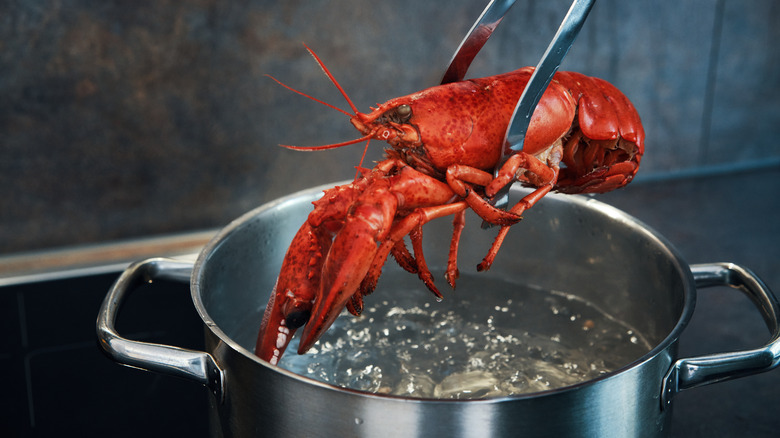Why Judy Joo Never Buys Frozen Lobster
There are plenty of foods that are perfectly good (and in some cases, even better) to buy frozen, from pie dough and french fries to peas and blueberries. But many foods are simply better to buy fresh — and, in some cases, alive.
When it comes to lobster, no matter where you live, you typically have the option to buy it fresh or frozen. But, while those frozen tails may be tempting, you're better off opting for a live crustacean, according to professional chefs like Judy Joo. The Korean-American tv personality and restaurateur tells Food & Wine that she never buys frozen lobster. And there's actually a scientific reason as to why.
The problem with frozen lobster is that it's no longer alive; once a lobster is dead, an enzyme is released in its body that negatively affects the texture of its meat, ultimately making it mealy or mushy rather than delicately firm. So, the next time you're wanting to buy lobster, do as the chefs do and grab a live one for the best-textured, best-tasting meat.
More reasons to buy fresh lobster rather than frozen
There are certainly many positives to buying frozen lobster, such as cost, a level of ease and convenience, and the opportunity to buy in bulk and store it. But, if what you're after is the best quality and best-tasting lobster meat, there are many more reasons to buy and cook live lobster versus frozen.
Fresh lobster meat comes with unequivocally better quality because, unlike its frozen counterpart, it isn't processed or preserved. On the other hand, frozen lobster is often processed with gases and injected with compounds and preservatives to help maintain its texture, color, and taste for a longer period of time. Since fresh lobster is typically free of any additives, it will naturally taste superior.
Another reason to buy fresh over frozen is that, while it may take a little more effort to store or cook it, it's often safer to cook the live variety. That's because shellfish like lobster tend to have bacteria in their flesh that can become more toxic after they die. This can be harmful and isn't always eliminated during the cooking process, so preparing the lobster while it's still alive will reduce any chance of contamination or food poisoning.
How to store and cook live lobster
Storing, handling, and cooking a live lobster at home may sound intimidating, but the truth is it's easy to do yourself as long as you keep a few key guidelines in mind.
Fresh lobster should be cooked on the same day you purchase or receive it, whenever possible. In the interim, to store live lobster before the delicious end result, the most important thing to do is to keep it alive — which relies on the proper moisture and temperature. An ideal storage temperature is around 40 degrees Fahrenheit, meaning the refrigerator is the best place to keep it. Seaweed is a great way to keep the lobster damp, too; just don't add ice or water as freshwater can kill the crustacean.
Before you cook live lobster, place it in the freezer for about 20 minutes. This will essentially put the lobster to sleep and allow for a more humane way to cook it. Once you're ready to prepare your meal, you can either steam or boil the lobster — just make sure you use a big pot that will give the shellfish plenty of room. A good rule of thumb is to steam or boil one pound of lobster for eight to nine minutes, and add two to three minutes for each half pound after that.



